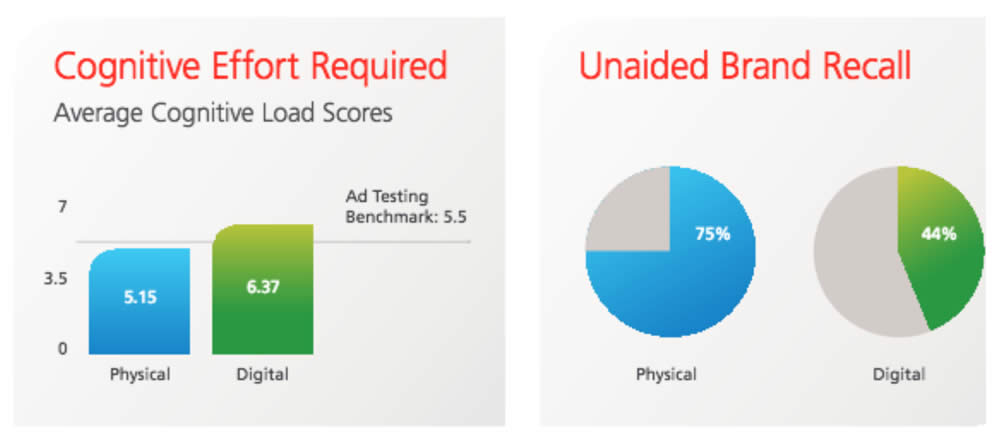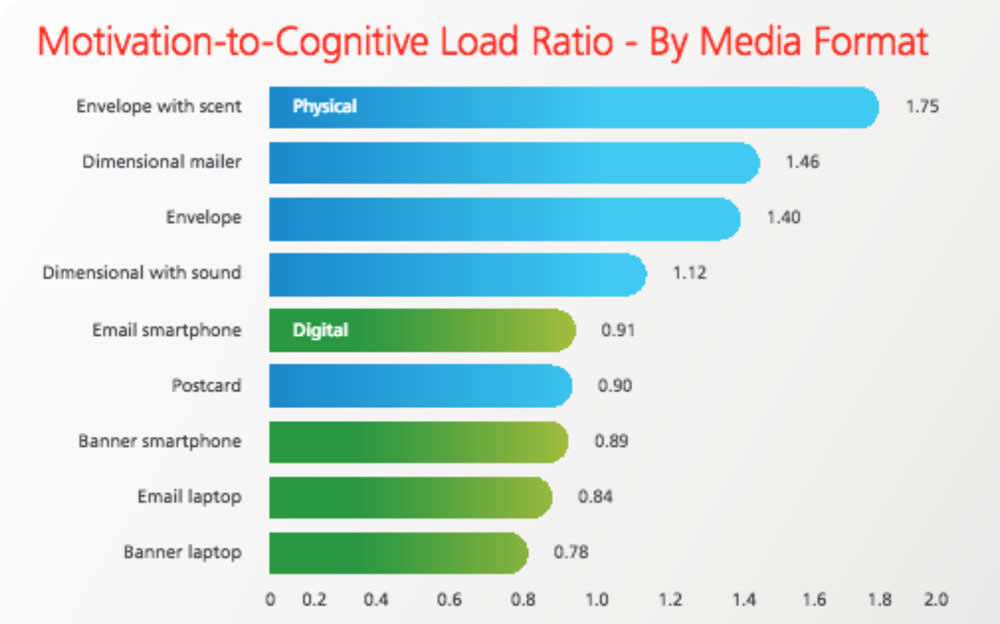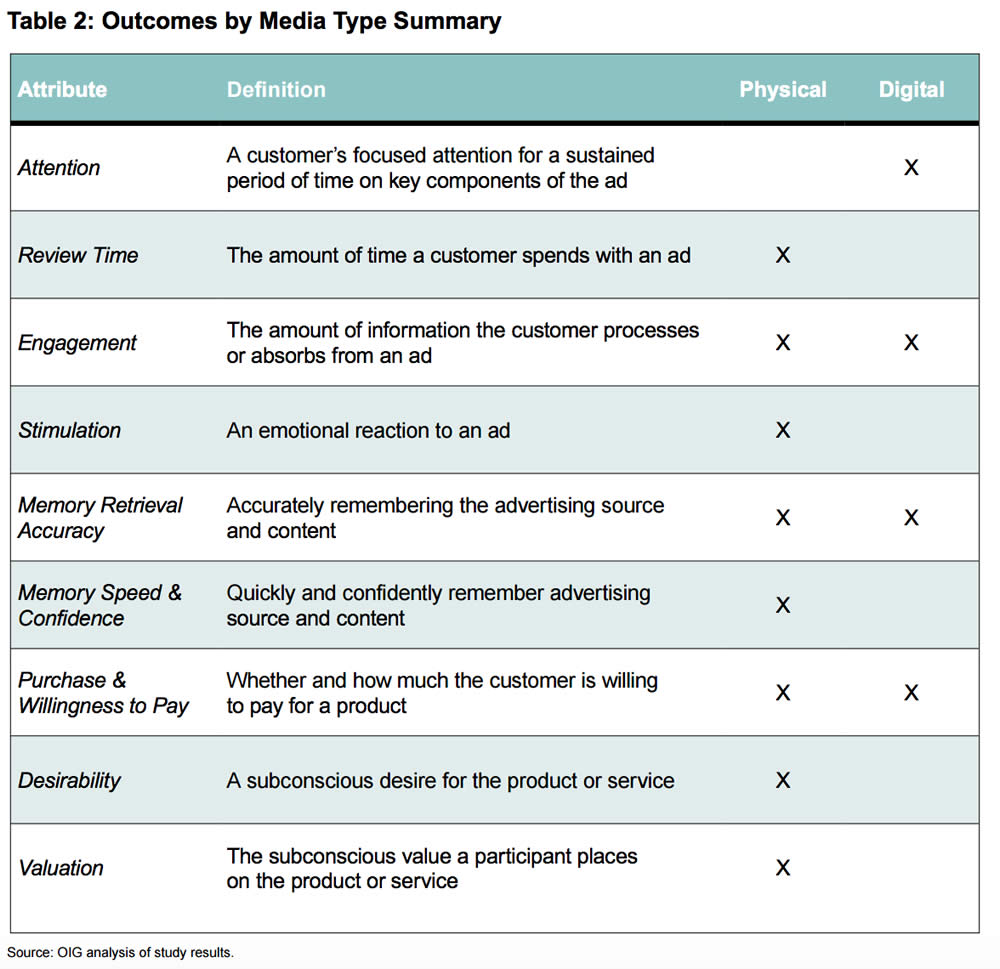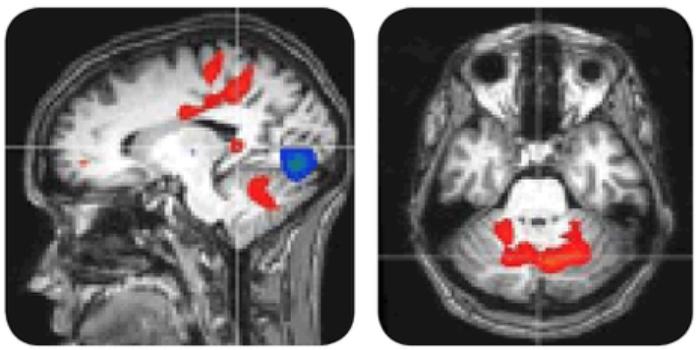There's good news for printers and paper companies. Despite the enormous migration to electronic media, neuroscience research shows that paper-based content and ads offer special advantages in connecting with our brains.
In the last decade, every marketer as been engaged in some kind of "print to digital" transformation. Glossy brochures, direct mail pieces, bulky manuals, and many other printed items have been replaced by a combination of web content, email, and on-demand electronic files.
This transformation is driven by how all of us consume media. We increasingly get our news, entertainment, and information via computers, tablets, and phones. Print-based media outlets have seen a decline in use and in some cases have disappeared completely.
We certainly aren't going to see a massive switch back to paper content. But, those marketers who have been looking forward to the day when print content is gone entirely may be surprised by the latest neuroscience research.
Rather than an all-digital world, it appears that a multi-channel approach that leverages the unique benefits of paper with the convenience and accessibility of digital will perform best.
The Latest Data
The most recent work supporting paper-based marketing is a study sponsored by Canada Post and performed by Canadian neuromarketing firm TrueImpact. The study compared the effects of paper marketing (direct mail pieces, in this case) with digital media (email and display ads).
The technologies used in this study were eye-tracking and high resolution EEG brain wave measurement. Conventional questionnaires were also used.
The three key metrics evaluated in the study were cognitive load (ease of understanding), motivation (persuasiveness), and attention (how long subjects looked at the content).
Direct mail was easier to process mentally and tested better for brand recall. According to the report,
Direct mail requires 21% less cognitive effort to process than digital media (5.15 vs. 6.37), suggesting that it is both easier to understand and more memorable. Post-exposure memory tests validated what the cognitive load test revealed about direct mail’s memory encoding capabilities. When asked to cite the brand (company name) of an advertisement they had just seen, recall was 70% higher among participants who were exposed to a direct mail piece (75%) than a digital ad (44%).

As a measure of overall effectiveness, the authors of the report calculate what they call the "motivation-to-cognitive load ratio," and say values greater than 1.0 are "most predictive of in-market success."
By their calculation, direct mail scored 1.31 compared to 0.87 for digital media. Here's how the individual formats fared:

While these measurements and metrics don't rise to the level of universal scientific standards, they seem to fit with other research in the paper vs. digital space.
Temple University Study
Earlier this summer, in Print vs. Digital: Another Emotional Win for Paper, I described a study published by Temple University researchers.
This study used fMRI brain scans to compare digital and paper. Their findings are summarized in this table:

Perhaps the most significant finding from the Temple study was that paper advertising activated the ventral striatum area of the brain more than digital media. A previous study of successful ad campaigns found that the ventral striatum was an indicator of desire and valuation.
While not quite the mythical "buy button," activity in this small brain structure had the highest correlation with advertising effectiveness. The study showed that ventral striatum activity was a better predictor than self-reporting by the subjects.
The fMRI approach used by the Temple scientists is the technique most widely used by academic researchers. While costly, fMRI studies can produce 3D images of brain activity. While their time resolution is lower than EEG, their ability to show activity in specific brain structures is valued by researchers.
For more on the previous Temple study, see Neuromarketing: Pseudoscience No More here at Forbes and my conversation with the scientists, Scientists Get Closer to The “Buy Button” in The Brain with Angelika Dimoka, Paul Pavlou and Vinod Venkatraman.
Paper's Emotional Impact
A 2009 study conducted by Bangor University and branding agency Millward Brown also used fMRI to study the different effects of of paper and digital media.
Some of their key conclusions were:
- Physical material is more “real” to the brain. It has a meaning, and a place. It is better connected to memory because it engages with its spatial memory networks.
- Physical material involves more emotional processing, which is important for memory and brand associations.
- Physical materials produced more brain responses connected with internal feelings, suggesting greater “internalization” of the ads.
Memory-Changing Power
A 2011 study showed that realistic print ads could actually change how subjects remembered an experience.
In Vivid Print Ads Change Your Memory, I describe how incorporating vivid images in ads actually caused subjects to remember consuming a brand of popcorn they had not actually tried. In addition, their attitude toward the product was more favorable.
In that study, the comparison was with print ads that had less imagery. But it seems likely that the same effect would occur if the study had compared large, vividly-illustrated print ads to ads viewed on a small screen like a smartphone or a tablet.
Reading, Comprehension And Recall
While the studies I describe above all compare the effects of print and digital advertising, quite a few scientists have looked at information or entertainment content. There's quite a body of work suggesting that our brains process a book differently if we read it in paper format vs. on an e-reader.
For example, a study in Norway concluded that, "students who read texts in print scored significantly better on the reading comprehension test than students who read the texts digitally."

Another study at San Jose State University found,
Screen‐based reading behavior is characterized by more time spent on browsing and scanning, keyword spotting, one‐time reading, non‐linear reading, and reading more selectively, while less time is spent on in‐depth reading, and concentrated reading. Decreasing sustained attention is also noted.
The Message For Marketers
Science clearly shows paper can be more impactful and memorable than digital. Digital, meanwhile, offers its own huge advantages, including instantaneous access, localization, powerful personalization and targeting, audio and video, and more.
Marketers should take advantage of the unique properties of both paper and digital. In particular, print advertising can maximize sensory appeal. Print offers the ability to deliver rich, vivid images along with tactile stimuli. In some cases, scent can be used to further increase print's impact.
In addition to exploiting the customer's senses, paper may also be more effective for communicating detailed information. While most ads are designed to avoid any hint of information overload, sometimes a B2B sales effort may involve important documentation to ensure the customer needs are met. Providing this information in paper format may increase the customer's comprehension and recall.
Personally, if I'm presenting someone with a copy of my book, I always give them a hardcover copy. Not only can I inscribe it, but I know that it will have a physical presence in that person's world instead of disappearing in a Kindle library with hundreds of other little icons.
How complete is your business's transition from paper to digital? Has the pendulum swung too far? Share your thoughts in a comment!
Roger Dooley is the author of Brainfluence: 100 Ways to Persuade and Convince Consumers with Neuromarketing (Wiley, 2011). Find Roger on Twitter as @rogerdooley and at his website, Neuromarketing.

